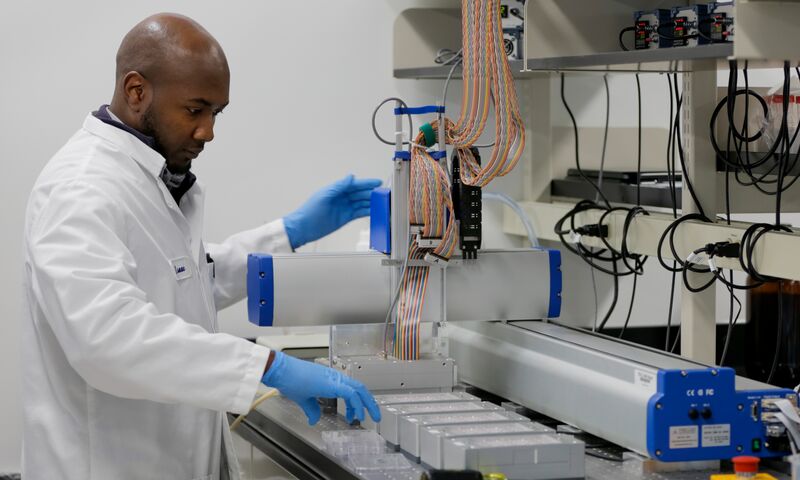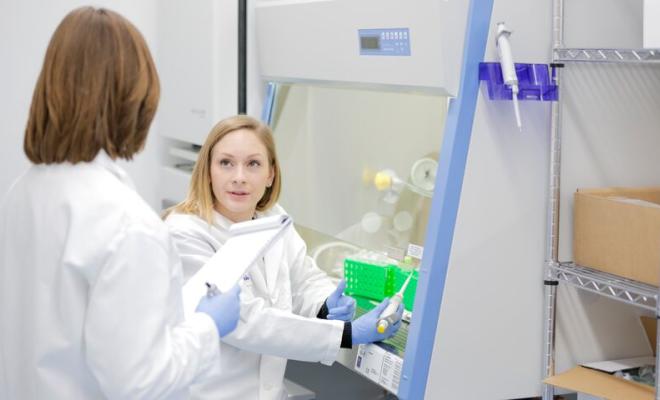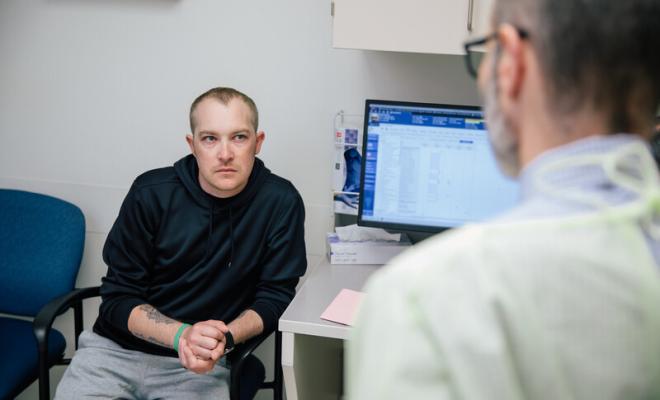The Cystic Fibrosis Foundation's one-of-a-kind CF research facility helps expedite the early stages of discovering a drug that could correct or improve the function of the defective cystic fibrosis transmembrane conductance regulator (CFTR) protein. The lab bridges the gap between discoveries made at academic institutions and the development of new medications by the pharmaceutical industry.
Since it first opened in 2012, the vision for the lab has evolved from a focus on developing new and better CFTR modulators to one that is centered on advancing research for the next generation of transformative treatments, especially for those with rare and nonsense mutations who can’t be treated with modulators. In addition to unique treatments for those with rare and nonsense mutations, the lab is concentrating research on enabling genetic therapies that will ultimately offer the best hope for a cure for CF.
Nonsense and Other Rare Mutations
More than 75% of the lab’s work is dedicated to identifying promising treatments for those with rare and nonsense mutations. A key area of focus for the lab is advancing potential treatments for people with nonsense mutations. Nonsense mutations (also known as “x” or “stop” mutations) cause cells to stop the production of the CFTR protein midway through the process, resulting in shortened, non-functional protein that the cell recognizes as defective and destroys.
Lab researchers are exploring ways to promote the development of readthrough agents that can help the protein-making machinery of the cell “read through” or override premature stop signals so that a full-length CFTR protein can be made. To help further this research, the lab has been collecting cells from people with rare and nonsense mutations through the RARE study and is storing these cells in its cell bank. These cells are used at the lab for discovering and testing new treatment approaches and can also be requested by other researchers for their work.
Genetic Therapies
Another key focus of the lab is advancing research into genetic therapies. One day they can be used to help all people with CF, but the lab — along with Foundation industry partners — initially will concentrate on developing these therapies for people who can’t be helped by modulators.
To help further research into genetic therapies, the lab will use part of its newly expanded facility as an incubator to attract and host startup companies that are interested in applying genetic therapies to CF. The additional space will allow industry researchers to work alongside lab scientists over an extended period to provide expertise in testing techniques and CF biology. This training and mentorship will speed up the development of new treatments by encouraging companies to bring new technologies into CF research and enabling them to carry out their research for new therapies more effectively.
The newly expanded lab also can host and train scientists from more established companies for weeks or months at a time to help further research on all kinds of treatments.
Stem Cell Research
The lab is increasing research into cell therapy to treat CF in the lungs. Cell therapy involves implanting healthy lung or lung progenitor cells into the lungs. Lung progenitor cells are partially differentiated stem cells that can further differentiate into all specialized cell types found in the lung. The Foundation only uses induced pluripotent stem cells — derived from adult human cells — in its research.
Lab researchers are studying how to get transplanted cells to engraft — grow in their new location and create new cells. The lab is also working on the development of a screening assay — or test — to determine what kind of treatments could be used to encourage the lungs to take up transplanted cells.



